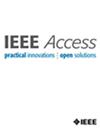Directed Fuzzy Edge Graphs Under q-ROF Environment: A Framework for Optimal Pathfinding
IF 3.4
3区 计算机科学
Q2 COMPUTER SCIENCE, INFORMATION SYSTEMS
引用次数: 0
Abstract
This paper introduces a novel framework of Directed Edge q-Rung Orthopair Fuzzy Graphs (DEq-ROFGs), where graph vertices are crisp, and edges are characterized by q-rung orthopair fuzzy numbers (q-ROFNs). This structure captures the uncertainty in edge relationships while retaining deterministic node identities, making it ideal for applications in uncertain environments such as social networks, supply chains, healthcare systems, and recommendation systems. The paper defines foundational properties of DEq-ROFGs including subgraphs, completeness, and various degree-based metrics, and it establishes a proposition regarding the balance between in-degrees and out-degrees. The core contribution is a novel path-finding algorithm based on Hamacher operators and an improved score function, which identifies optimal paths between nodes under uncertainty. Unlike classical algorithms, it considers the suitability of a path, not just its length. Applied to an emergency road network scenario, the algorithm successfully determines the optimal route for service vehicles, and the choice between these routes can be made based on the score of the resulting path length. Comparative simulations show their effectiveness over traditional methods. Further analysis shows that increasing the q-value reduces both path score and length, and that Einstein operators yield higher destination scores than Hamacher and Dombi, confirming the model’s adaptability and robustness.q-ROF环境下的有向模糊边图:一个最优寻路框架
本文提出了一种新的有向边q-Rung正交模糊图(DEq-ROFGs)框架,其中图的顶点是清晰的,图的边缘用q-Rung正交模糊数(q-ROFNs)来表征。这种结构在保留确定性节点身份的同时捕获了边缘关系中的不确定性,使其成为社交网络、供应链、医疗保健系统和推荐系统等不确定环境中的应用程序的理想选择。本文定义了deq - rofg的基本性质,包括子图、完备性和各种基于度的度量,并建立了关于内外度平衡的命题。核心贡献是一种基于Hamacher算子和改进分数函数的寻路算法,该算法在不确定情况下识别节点间的最优路径。与经典算法不同,它考虑路径的适宜性,而不仅仅是路径的长度。将该算法应用于紧急路网场景,成功地确定了服务车辆的最优路线,并可以根据结果路径长度的得分进行这些路线的选择。仿真结果表明,该方法优于传统方法。进一步分析表明,增加q值会减少路径得分和长度,并且Einstein算子的目标得分高于Hamacher和Dombi,证实了模型的适应性和鲁棒性。
本文章由计算机程序翻译,如有差异,请以英文原文为准。
求助全文
约1分钟内获得全文
求助全文
来源期刊

IEEE Access
COMPUTER SCIENCE, INFORMATION SYSTEMSENGIN-ENGINEERING, ELECTRICAL & ELECTRONIC
CiteScore
9.80
自引率
7.70%
发文量
6673
审稿时长
6 weeks
期刊介绍:
IEEE Access® is a multidisciplinary, open access (OA), applications-oriented, all-electronic archival journal that continuously presents the results of original research or development across all of IEEE''s fields of interest.
IEEE Access will publish articles that are of high interest to readers, original, technically correct, and clearly presented. Supported by author publication charges (APC), its hallmarks are a rapid peer review and publication process with open access to all readers. Unlike IEEE''s traditional Transactions or Journals, reviews are "binary", in that reviewers will either Accept or Reject an article in the form it is submitted in order to achieve rapid turnaround. Especially encouraged are submissions on:
Multidisciplinary topics, or applications-oriented articles and negative results that do not fit within the scope of IEEE''s traditional journals.
Practical articles discussing new experiments or measurement techniques, interesting solutions to engineering.
Development of new or improved fabrication or manufacturing techniques.
Reviews or survey articles of new or evolving fields oriented to assist others in understanding the new area.
 求助内容:
求助内容: 应助结果提醒方式:
应助结果提醒方式:


